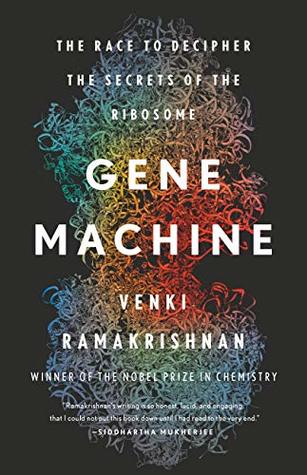More on this book
Community
Kindle Notes & Highlights
Read between
November 11 - November 16, 2023
WHEN I LEFT INDIA, I had my heart set on becoming a theoretical physicist. I was nineteen years old and had just graduated from Baroda University. It was customary to stay on to get a master’s degree in India before going abroad for a PhD, but I was eager to go to America as soon as I could. To me, it was not only the land of opportunity but also of rational heroes like Richard Feynman, whose famous Lectures on Physics had been part of my undergraduate curriculum. Besides, my parents were already there, as my father was doing a short sabbatical at the University of Illinois in Urbana. Since
...more
This highlight has been truncated due to consecutive passage length restrictions.
The discovery of the ribosome and its role in making proteins was one of the great triumphs of modern biology.
Broadly speaking, a gene is a stretch of DNA that contains information on how and when to make a protein.
The whole ribosome has half a million atoms. Because it is the link between our genes and the proteins they specify, the ribosome lies at the very crossroads of life.
Because it uses energy and moves during this enormously complicated process, the ribosome is referred to as a molecular machine or a nanomachine.
This situation reminded me of a famous New Yorker cartoon of the Long Island Expressway that said, “Exit 66—Yaphank. If you have already been to Yaphank, please disregard this exit.”
The atomic theory of matter took such a long time to develop and is so important that Richard Feynman, the famous physicist, said that if all scientific knowledge were to be destroyed and only one sentence could be passed on to the next generations of humans, it should be “All things are made of atoms—little particles that move around in perpetual motion, attracting each other when they are a little distance apart, but repelling upon being squeezed into each other.”
Without a lens for X-rays, people figured out clever ways to do mathematically what a lens does—combine waves from different parts of the exposed object into an image (for the mathematically inclined, this is doing a Fourier transform of the scattered rays).
Looking back at the long struggle to get the first structure of a ribosome by crystallography, it is ironic that today it would only take a week or two from start to finish.
Of course, nobody had taken the slightest interest in honoring me in these ways during the many years after the key breakthroughs with the ribosome; without my having won the Nobel lottery, none of them would have given me a second thought—if they had thought of me at all.


